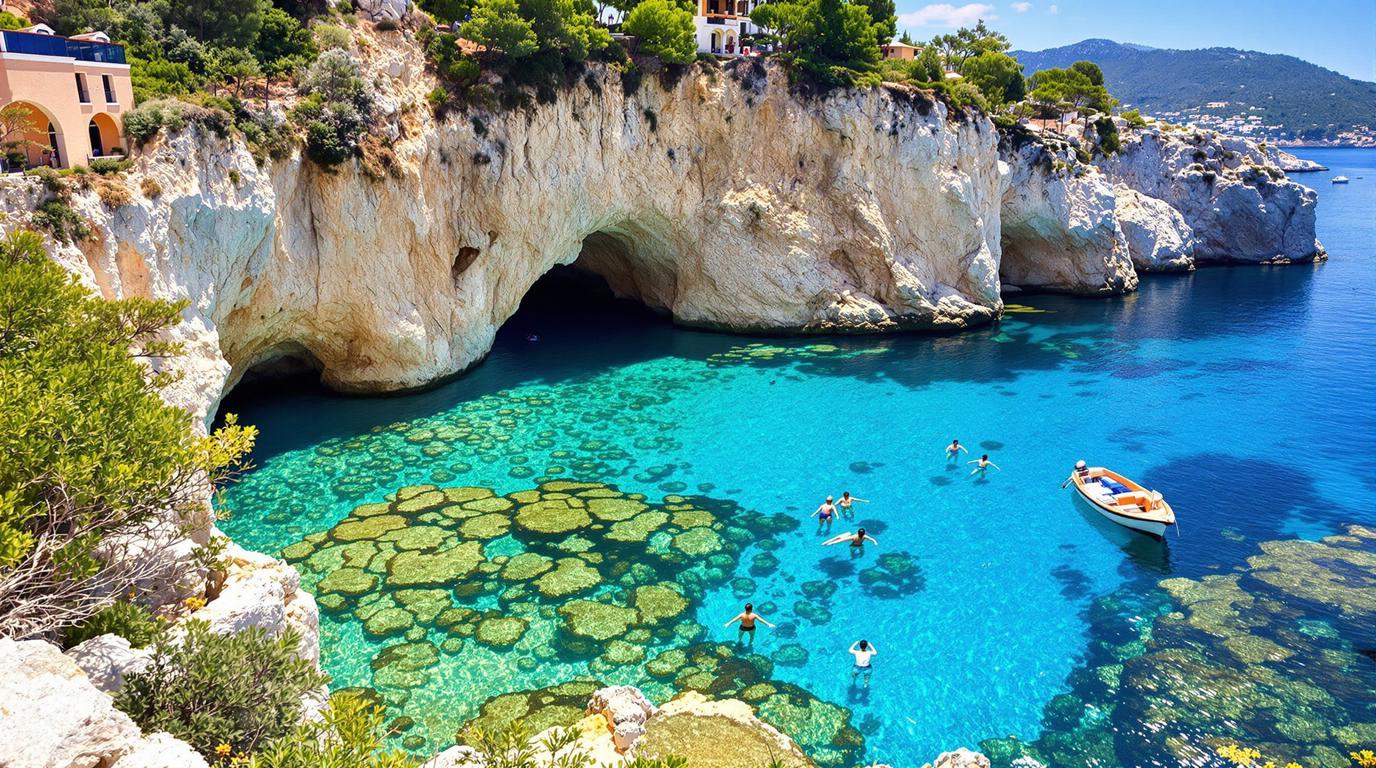I paid €12 for what seemed like a simple ferry crossing to Elba Island, but found myself swimming in the crystal waters of what locals call “Napoleon’s cove” just hours later. This overlooked Italian paradise – where France’s famous emperor once ruled during his exile – combines affordability, rich history, and jaw-dropping natural beauty in a way that puts more famous Mediterranean destinations to shame.
The €12 ticket to paradise most travelers miss
The ferry ride from Piombino to Portoferraio costs roughly the same as two glasses of wine in Rome, making Elba one of Italy’s best-value island getaways. As the largest island in Tuscany’s archipelago, it somehow remains blissfully under-visited compared to spots like Capri or Sardinia.
During the hour-long crossing, I watched the island’s dramatic silhouette grow larger, its mountains rising directly from turquoise waters that could easily be mistaken for the Caribbean. “Most visitors come for a day trip,” explained Marco, my local guide, “but they’re missing the hidden treasures that make Elba special.”
Walking in Napoleon’s footsteps
Few travelers realize that this island was once the private kingdom of history’s most famous military leader. After his first exile in 1814, Napoleon Bonaparte ruled Elba for 300 days, leaving an indelible mark on the landscape and culture.
I toured Villa dei Mulini, Napoleon’s primary residence in Portoferraio, where his personal effects remain preserved as if he might return any moment. More impressive than the historic artifacts was the villa’s strategic position overlooking the harbor – Napoleon could monitor every ship approaching his island domain.
“Even in exile, Napoleon was thinking like an emperor. He reformed our island’s agriculture, rebuilt roads, and improved life for ordinary people in ways we still benefit from today,” shared Eleonora, my museum guide.
The secret cove hidden beneath history
The true revelation came after leaving the villa. Following a narrow path that winds down the cliffs beneath Napoleon’s former home, I discovered Spiaggia delle Viste – a sheltered rocky cove with the clearest water I’ve ever seen. Locals confirmed this secluded spot was a favorite of the emperor himself.
Unlike the packed beaches of more famous Mediterranean destinations, I shared this historical swimming hole with just three Italian families. The water was impossibly clear – I could count pebbles on the seafloor nearly 20 feet below.
A turquoise coastline with 126 beaches
Napoleon’s cove is just one of Elba’s 126 beaches, each offering a different experience. Fetovaia’s golden crescent and Cavoli’s party atmosphere contrast with secluded gems like Laconella, where forest meets sea in a scene reminiscent of undiscovered Caribbean islands.
The island’s varied coastline means you can always find a beach protected from wind, regardless of weather conditions. On Elba’s western edge, I watched daredevil windsurfers riding massive waves while just a mile away, families lounged on tranquil shores.
Beyond beaches: mountains and medieval villages
While the coastline dazzles, Elba’s interior rivals Europe’s most charming countryside. I rented a scooter (€25 daily) to explore ancient villages perched on hillsides, where time seems frozen centuries ago.
In Marciana Alta, I sipped local Aleatico wine in a stone piazza while watching elderly locals play cards in the shade. The cable car to Monte Capanne (Elba’s highest peak) delivered panoramic views stretching to Corsica and mainland Italy.
Where to stay: affordable luxury
Unlike Turkey’s cave hotels or Maine’s car-free islands, Elba offers remarkable value. Small family-run hotels in Portoferraio start around €80 nightly, while seaside apartments can be found for €100 during shoulder season.
“The best time to visit is May or September,” recommended Giovanni, my hotel owner. “The sea is warm, prices are lower, and you’ll have beaches almost to yourself.”
The unexpected bonus: incredible seafood
Each evening, I feasted on just-caught seafood at harborside restaurants, where fishermen deliver their catch directly to chefs. A complete dinner with wine rarely exceeded €30 – half what you’d pay in Florence or Rome.
As my ferry pulled away from Elba’s shore, I realized I’d discovered what might be Italy’s perfect island – historically fascinating, naturally stunning, and remarkably affordable. Napoleon may have considered his time here punishment, but for modern travelers, Elba is nothing short of revelation.
